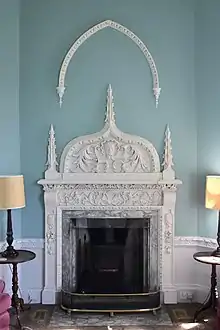Culloden Tower
The Culloden Tower was built as a parkland ornament or folly in about 1746 on the estate of John Yorke MP, at Richmond, North Yorkshire. It was built on the site of an earlier pele tower, the remains of which possibly form the rectangular base.[1] It is also known as The Temple[1] or The Cumberland Temple, in celebration of the victorious Duke of Cumberland's army over the forces of the pretender Prince Charles Edward Stuart at the battle of Culloden in 1746.


The tower was most probably designed by Daniel Garrett and comprises four storeys and a roof terrace linked by a small spiral staircase. The estate, comprising Yorke House, was demolished in 1823, and the remaining buildings and parklands, including the tower, became part of Temple View. The isolated position of the tower meant that it was used less and less, and was increasingly subject to vandalism and theft. The tower was saved in 1981 by the Landmark Trust, who undertook a full restoration of the property. It is currently available as a holiday let.[3]

The tower is octagonal on a square base, with a staircase projecting on the west side. The windows are pointed, and there is a band of blind ogee arches between the first and second floor windows. Inside there are two main rooms, each occupying a whole floor, and thus octagonal. The first floor room has rich Gothick ornamentation, in particular the chimneypiece. The room has a domed plaster vault. The second floor room is more classical in its detail.[2]
References
- Historic England. "The Temple (1131225)". National Heritage List for England. Retrieved 26 January 2018.
- Pevsner, Nikolaus (1966). The Buildings of England: North Yorkshire. Penguin Books. p. 297.
- "Landmark Trust website: Culloden Tower". Retrieved 20 August 2016.